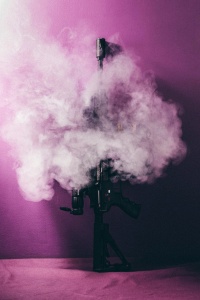
Photo by Vladimir Palyanov on Unsplash
I’ve talked before about Permanence of Object. Part of that concept includes Chekhov’s Gun – a “dramatic principle that states every element in a story must be necessary, and irrelevant elements should be removed, elements should not appear to make ‘false promises’ by never coming into play.” (Wikipedia, Chekhov’s Gun entry) The supreme example of this is a rifle is hanging on the wall in a play’s first act, it should be used by the last act.
The reverse is also true – if an object is used in the last act, it should appear before its use.
But the bare-bones dramatic principal can be taken too far. I recently read a novel where if something is introduced, I knew it would be used. While the Chekhov’s Gun principal is the gold standard for short stories and plays, which need to be trimmed to the basics, novels should wander a bit, introducing non-essential side stories as red herrings, especially if the main plotline is a mystery. In this particular manuscript, every little side bit glared like the Gun on the Wall. Scuba gear in the admiral’s office, the spy was about to be sent somewhere he needed scuba gear. A book, needed to be read.
Not a single wander off the trail – straight shooting the whole way. Nothing felt woven, like a rich plot, the whole book felt like a string of beads, one after the other. Every “aside” I read propelled the story forward full-steam. The side trips feed into the main plot. No emotional subplot, not growth subplot.
Sure, no White Box issues. But only because when I (as the reader) walked into a room, there would be one object which would be relevant to the story and described. Otherwise, the POV character I was following wouldn’t have gone into the room.
The novel felt similar to a video game where the developers didn’t provide any side-quests, nor the opportunity to go off-script for a fail. A choose-your-own adventure with only one option at the end of each page.
I mean, yeah, that is actually the case of how a novel really is. But it shouldn’t FEEL that way.
When writing be sure to describe more than just the things needed for the main plot if writing in a longer form. Play a game of Clue with your reader – will the gun, the knife, or the candlestick be important to the plot? And which is the symbol of the inner angst the main character needs to resolve in their emotional growth?
